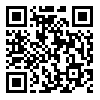year 2, Issue 3 And 4 (3-2009)
Iran J Med Microbiol 2009, 2(3 And 4): 67-72 |
Back to browse issues page
Download citation:
BibTeX | RIS | EndNote | Medlars | ProCite | Reference Manager | RefWorks
Send citation to:



BibTeX | RIS | EndNote | Medlars | ProCite | Reference Manager | RefWorks
Send citation to:
Mehrabi Tavana A, Ataee R, Najde Gerami E, Goya M M, Rahbar M. Serotyping of clininical isolates of Streptococcus pneumoniaefrom Tehran, Iran. Iran J Med Microbiol 2009; 2 (3 and 4) :67-72
URL: http://ijmm.ir/article-1-131-en.html
URL: http://ijmm.ir/article-1-131-en.html
Ali Mehrabi Tavana 
 1, RamezanAli Ataee2
1, RamezanAli Ataee2 
 , Esmail Najde Gerami2
, Esmail Najde Gerami2 
 , Mohammad Mehdi Goya3
, Mohammad Mehdi Goya3 
 , Mohammad Rahbar4
, Mohammad Rahbar4 


 1, RamezanAli Ataee2
1, RamezanAli Ataee2 
 , Esmail Najde Gerami2
, Esmail Najde Gerami2 
 , Mohammad Mehdi Goya3
, Mohammad Mehdi Goya3 
 , Mohammad Rahbar4
, Mohammad Rahbar4 

1- Molecular Biology Research Center, Baqiyatallah (a.s) University of Medical Sciences, Tehran, Iran , mehrab@bmsu.ac.ir
2- Research center for Bacterial Toxins Application, Baqiyatallah (a.s) University of Medical Sciences, Tehran, Iran
3- Infectious Diseases Ward, School of Medicine, Iran University of Medical Sciences, Tehran, Iran
4- Public Health Reference Laboratory, Tehran, Iran
2- Research center for Bacterial Toxins Application, Baqiyatallah (a.s) University of Medical Sciences, Tehran, Iran
3- Infectious Diseases Ward, School of Medicine, Iran University of Medical Sciences, Tehran, Iran
4- Public Health Reference Laboratory, Tehran, Iran
Abstract: (12441 Views)
Background and objectives: Streptococcus pneumoniae is a bacterial pathogen most commonly associated
with acute otitis media and pneumonia and the second most important pathogen in cases of meningitis in
children under 2 years old. Currently more than 90 pneumococcal serotypes have been identified based on their
antigenic differences in the capsular polysaccharides, with distribution varying according to age group, clinical
symptoms, and geographic area. The aim of this study was to determine the most prevalent serotypes of
Streptococcus pneumoniae associated with different infectious diseases in Tehran medical centers.
Materials and methods: In total 50 clinical isolates of Streptococcus pneumoniae were collected from Tehran medical centers and re – identified using standard identification tests. Quelling test was used for serotyping of the isolates as per Statens Serum Institute(SSI) guideline. The data were analyzed using SSI guideline.
Results: In this study, the distribution of isolated Streptococcus pneumoniae in relation to site of infection were: respiratory tract, 18 isolates (36%) blood, 13 isolates (26%) eye, 10 isolates ( 20%) and other sites, 7 isolates (14%). The most common serotypes were 6A and 6B. The prevalent serotypes in adults and infants were serotype 2 and 19 (19A, 19B, 19C, 19F) respectively. The prevalent serotypes according to the site of infection were: respiratory tract, 7 blood, 4 and eye, 19.
Conclusion: The finding of this study showed that serotype 6 in common serotype in both adults and infants.
Materials and methods: In total 50 clinical isolates of Streptococcus pneumoniae were collected from Tehran medical centers and re – identified using standard identification tests. Quelling test was used for serotyping of the isolates as per Statens Serum Institute(SSI) guideline. The data were analyzed using SSI guideline.
Results: In this study, the distribution of isolated Streptococcus pneumoniae in relation to site of infection were: respiratory tract, 18 isolates (36%) blood, 13 isolates (26%) eye, 10 isolates ( 20%) and other sites, 7 isolates (14%). The most common serotypes were 6A and 6B. The prevalent serotypes in adults and infants were serotype 2 and 19 (19A, 19B, 19C, 19F) respectively. The prevalent serotypes according to the site of infection were: respiratory tract, 7 blood, 4 and eye, 19.
Conclusion: The finding of this study showed that serotype 6 in common serotype in both adults and infants.
Type of Study: Original Research Article |
Subject:
Medical Bacteriology
Received: 2013/11/16 | Accepted: 2013/11/16 | ePublished: 2013/11/16
Received: 2013/11/16 | Accepted: 2013/11/16 | ePublished: 2013/11/16
Send email to the article author
| Rights and permissions | |
 |
This work is licensed under a Creative Commons Attribution-NonCommercial 4.0 International License. |



